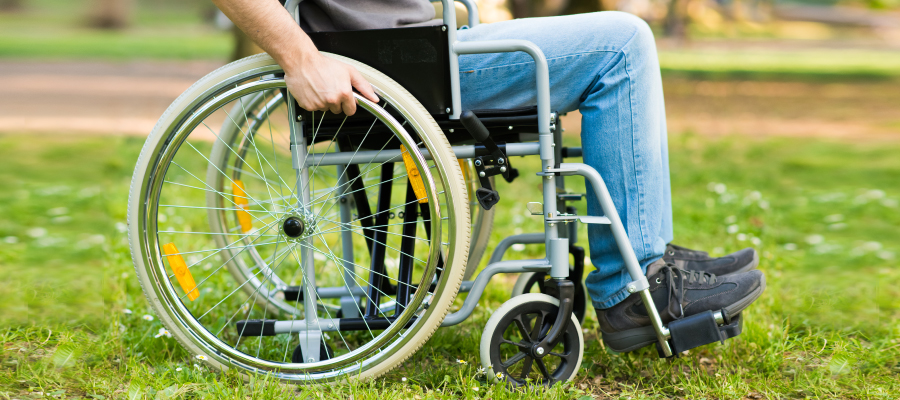The spinal cord enables your brain to communicate with your body. Every second of your life, messages are sent up and down the spinal cord to keep you on the move. When a spinal cord injury (S.C.I.) occurs, communication between your brain and body may be severed, resulting in a loss of function.
The cord in humans may be likened to a coaxial cable, about one inch in diameter, and is a continuation of the brain. It looks like firm, white fat. Nerves extend out from the cord to the muscles, skin and bones, to control movement, receive sensations and regulate bodily excretions and secretions. The 31 pairs of spinal nerves are divided by into 8 cervical, 12 thoracic, 5 lumbar, 5 sacral, and 1 coccygeal pair.
S.C.I. occurs when a traumatic event results in damage to cells within the spinal cord, or severs the nerve tracts that relay signals up and down the spinal cord. The most common types of S.C.I. include contusion (bruising of the spinal cord) and compression (caused by pressure on the spinal cord). Other types of injuries include lacerations (severing or tearing of some nerve fibers, such as damage caused by a gunshot wound), and central cord syndrome (specific damage to the corticospinal tracts in the cervical spinal cord).
Severe S.C.I. often causes paralysis (loss of control over voluntary movement and muscles of the body) and loss of sensation and reflex function below the point of injury. This includes autonomic activity such as breathing and other activities such as bowel and bladder control. Other symptoms such as pain or sensitivity to stimuli, muscle spasms, and sexual dysfunction may develop over time. S.C.I. patients are also prone to develop secondary medical problems, such as bladder infections, lung infections, and bedsores.
